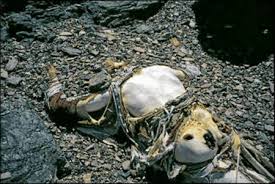Rescuers recovered the body of one mountain guide on Saturday for the death toll to rise to 13 after an ice avalanche swept the lower slopes of Mount Everest.
The accident has been described as the deadliest accident on the world’s highest mountain.
The avalanche had struck a perilous passage called the Khumbu Icefall, which was riddled with crevasses and piled with serac or huge chunks of ice, which could break free without warning.
“We were tied on a rope and carrying gas to camp, there was a sudden `hrrrr’ sound,” said Kami Sherpa, 25, one of at least three survivors flown by helicopter to Kathmandu.
Sherpa said in a hospital intensive care unit where he was being treated for a blood clot on his leg and facial injuries: “We knew it was an avalanche but we couldn’t run away or do anything.
“There was a big chunk of snow that fell over us and swept us away.
“It looked like clouds, all white.”
Climbers declared a four-day halt to efforts to scale the 8,848-metre (29,029-ft) summit.
But, while some decided to abandon their mission, others said they would go ahead after talking to their guides.
All of the victims were sherpa mountain guides.
“Everyone is shaken here at Base Camp. Some climbers are packing up and calling it quits, they want nothing to do with this,” Tim Rippel of Peak Freaks Expeditions wrote in a blog.
Shocked relatives wondered how they would cope without the men who take huge risks to earn up to $5,000 for a two-month expedition – around 10 times average annual pay in Nepal.
“He was the only breadwinner in the family,” said 17-year-old Phinjum Sherpa, as she waited for the body of her uncle, Tenji Sherpa, at a Buddhist monastery in Kathmandu.
“We have no one to take care of us.”
Although relatively low on the mountain, climbers say the icefall is one of the most dangerous places on Mount Everest.
There are no safer paths along the famous South Col route scaled by Sir Edmund Hillary and Tenzing Norgay in 1953.
Around 100 climbers and guides had already passed beyond the Khumbu Icefall to prepare their attempts on the summit.
They are safe, but a new path will have to be made to make it possible to continue the expeditions.
Rippel said his sherpas had lucky escapes, two returned to base camp five minutes before the avalanche hit.
He added that two were briefly trapped above the avalanche but managed to make their way down.
Officials said one body had been recovered in Saturday’s rescue effort, leaving three sherpas still missing.
Reuters/NAN.
Trending
- GOCOP condoles with Newdawnngr publisher on wife’s death
- ICPC arraigns Ministry of Water Resources official for money laundering
- LASAA reacts to concerns raised on faulty billboard in Abati Barrack
- Oyebanji hails Tinubu for approving university for Ekiti
- Lagos rallies town planners to embed environmental laws into urban development
- FG plans cancellation of visa-on-arrival policy, to introduce landing, exit cards
- UN pledges to support women’s participation in Akwa Ibom’s economic, political affairs
- Breaking: Tinubu okays relocation of 29 correctional centres from urban areas


